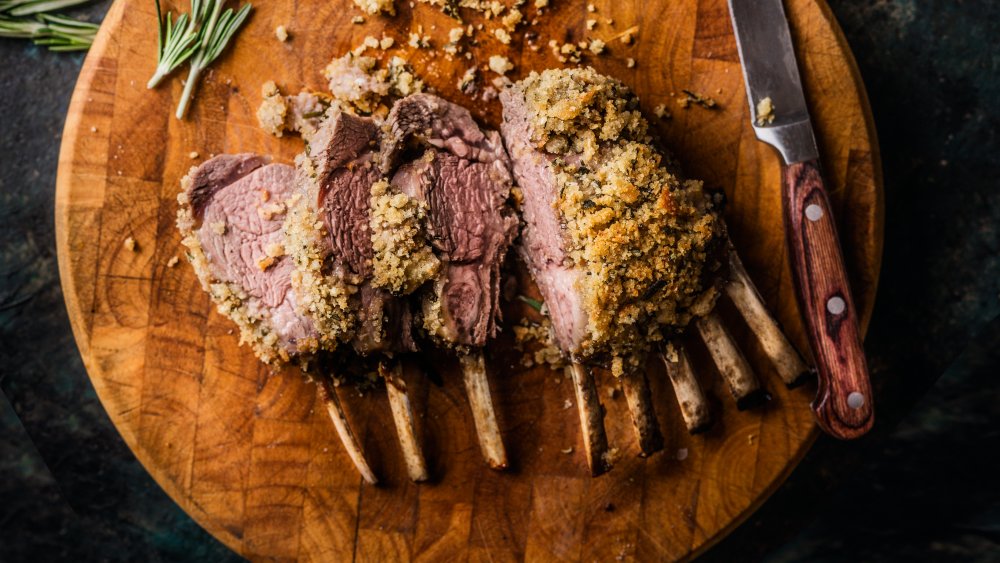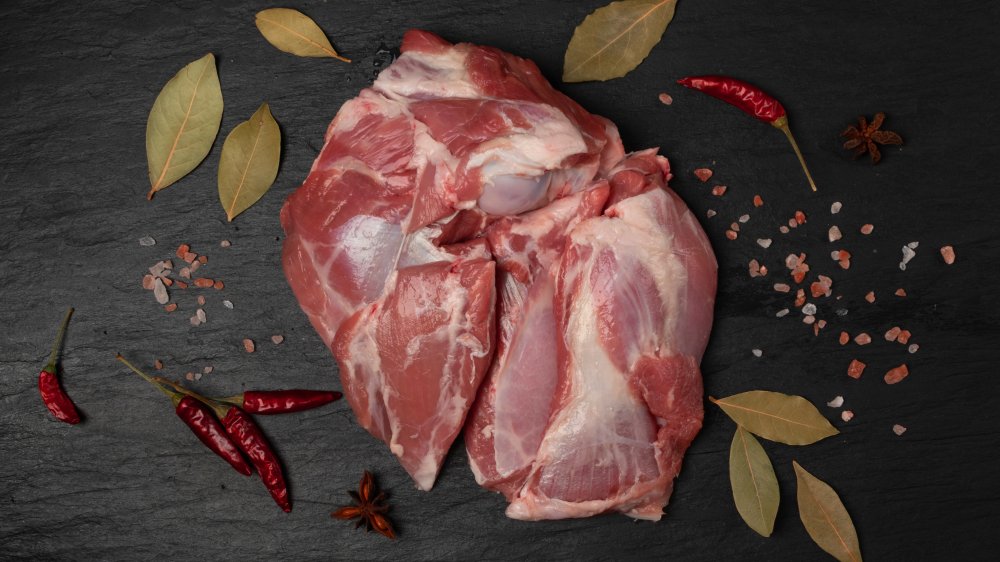Here's The Difference Between Mutton And Lamb
Since lamb and mutton both come from sheep, it's easy to assume that they're just different terms for essentially the same thing. While it's true that both meats are from sheep, there are still a few significant differences between the two that change the flavor and even how you prepare and eat them. Cuts of meat and preparation aside, the difference between lamb and mutton all comes down to one factor: age.
According to The Kitchn, the term "lamb" refers to sheep that are less than one year old. Usually, lambs are slaughtered and processed when they're between four and 12 months old, which gives their meat a mild flavor. There usually isn't much fat on lambs, so the meat is lean and can be a light pink or pale red color. Lambs that are slaughtered when they're three months old or less are called spring lambs, and their meat is usually even more tender and mild in flavor. Usually, if you're eating meat from sheep in the U.S., it's almost always lamb just because it's more popular than mutton.
How mutton is different from lamb
Mutton is much more popular in Europe and the Middle East. Usually, mutton is from sheep that are at least three years old, but the term can be used for meat from any sheep that's more than one year old. Mutton is dark red in color and also a lot fattier than lamb. According to The Kitchn, mutton also has a much stronger flavor than lamb and can taste gamey, so if you like duck or venison, which both have intense flavors, you might prefer mutton over lamb.
Because of their differences, mutton and lamb usually aren't prepared the same way. The shoulder and leg are the most commonly prepared cuts of mutton, but they're usually stewed since the meat can be a little tough. Leg of lamb is also popular, and so are lamb chops. Ground lamb can be used in place of ground beef.
One other factor to consider: Since lamb is more popular than mutton in the U.S., it can also be more expensive. Lambs raised in the U.S. are also usually fed grain and have a milder flavor than lambs imported from Australia and New Zealand, which are grass-fed and leaner. To know exactly what you're getting, be sure to read the package carefully before adding any lamb to your cart. And if you haven't tried either one before, it might be time to give each one a chance!

